Bronze Age artifacts more than 2,000 years old from Yangtze River region provide unique insight into China's fascinating history, report Deng Zhangyu in Beijing and Lia Zhu in San Francisco.
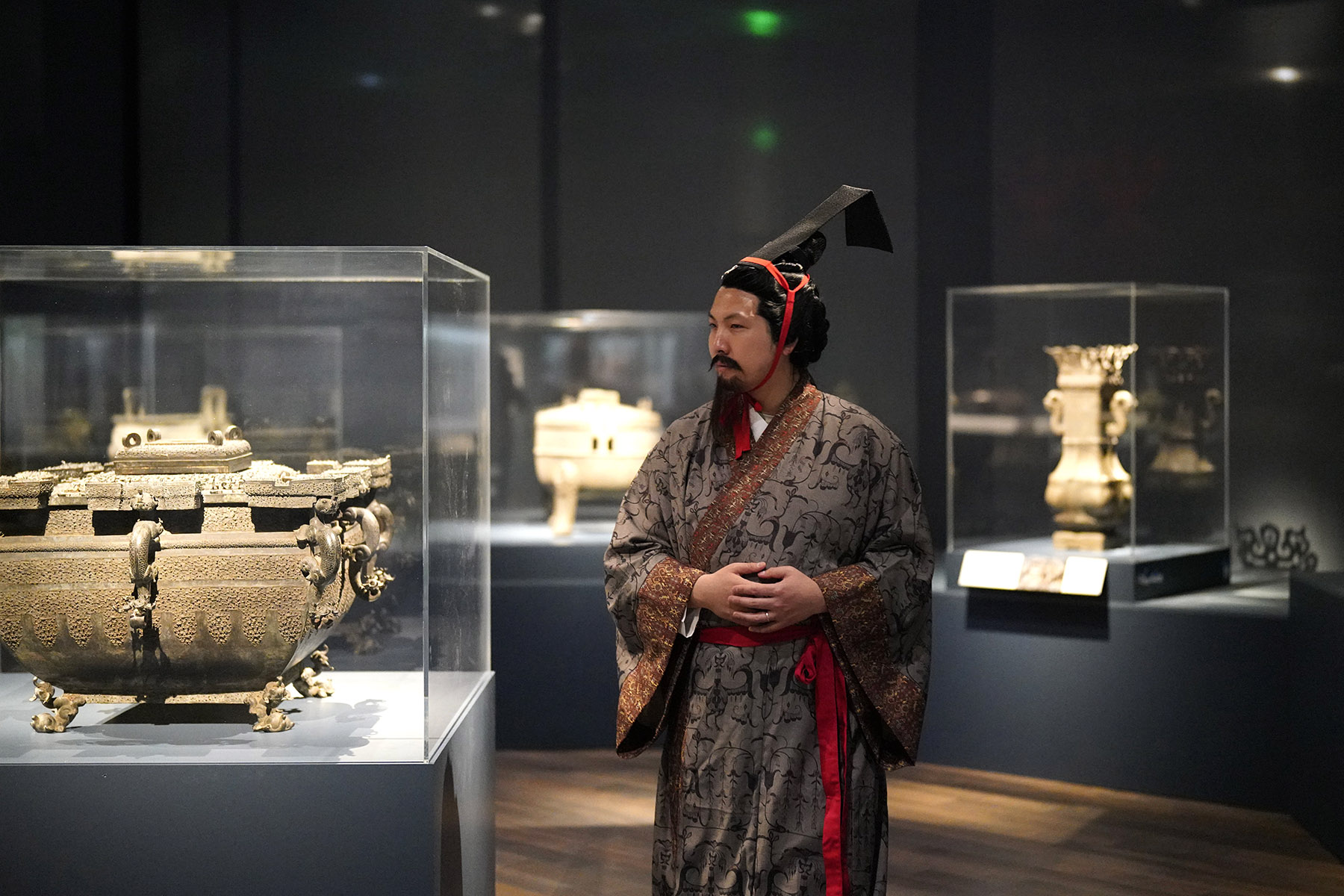
A captivating exhibition at the Asian Art Museum in San Francisco offers a clue to the vibrant Bronze Age cultures that flourished along the Yangtze River more than 2,000 years ago.
As the biggest archaeological exhibition traveling from China to the United States after the COVID-19 pandemic waned, Phoenix Kingdoms: The Last Splendor of China's Bronze Age met an appreciative audience at the museum on Friday, showcasing more than 260 items of remarkable artifacts unearthed from aristocratic tombs in Hubei province.
The exhibition was co-organized by the Asian Art Museum and Hubei Provincial Museum. It showcases a diverse range of objects: intricate bronze vessels, jade ornaments, musical instruments used in ancient ceremonies, and weaponry employed in battles. Lacquerware, a hallmark of luxury and refinement, also features.
READ MORE: Sculpting a civilization
The exhibits are loaned from six cultural institutions, including the provincial museum, the Hubei Provincial Institute of Cultural Relics and Archaeology, and Jingzhou Museum. Many of the pieces on display, such as bronze vessels, lacquerware and jade objects, have traveled outside China for the first time.
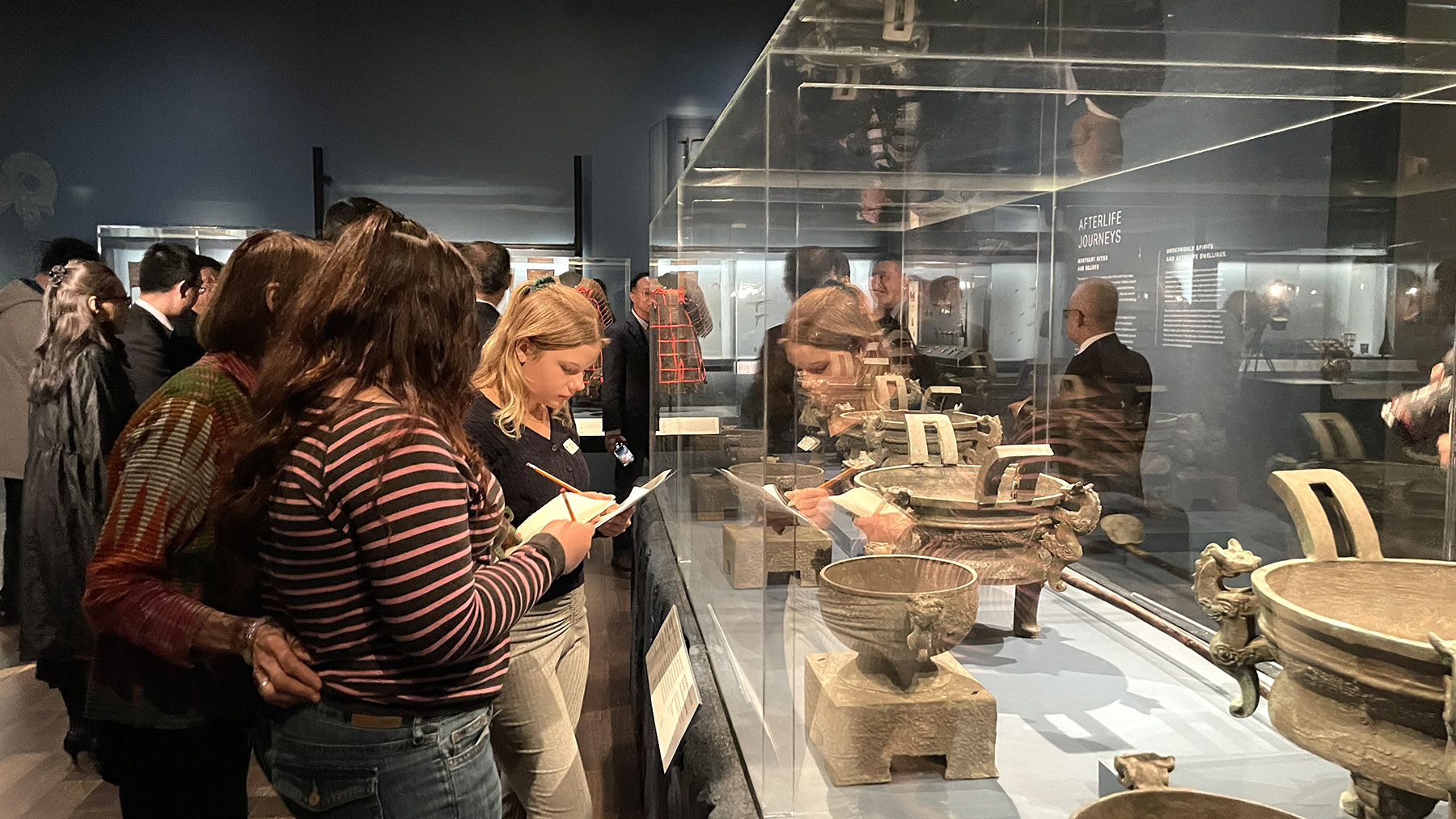
Li Qun, director of China's National Cultural Heritage Administration, said at the opening ceremony that it is the largest show of cultural property China has organized in the US in recent years and represents the magnificent and romantic charm of Chinese culture to the US audience.
"Supported by in-depth academic research and the latest archaeological findings, it showcases the continuity, unity, peacefulness, inclusiveness, and innovativeness of Chinese civilization," said Li, who is also China's vice-minister of culture and tourism.
In November, President Xi Jinping met with President Joe Biden in San Francisco, inaugurating the future-oriented "San Francisco vision" to enhance the stable, sound and sustainable development of the China-US relationship.
Li said the show is an example of transforming that vision into reality. He called for close cooperation between museums in China and the US in future to allow both the Chinese and American people to understand and respect each other's cultures and values.
The exhibition received strong support from China's National Cultural Heritage Administration and partner museums in China, which loaned important pieces from their collections, such as the standing crane-like creature with deer antlers, and the painted drum with a pedestal design of phoenixes on tigers' back, said Jeremy Zhang, the museum's curator of Chinese art.
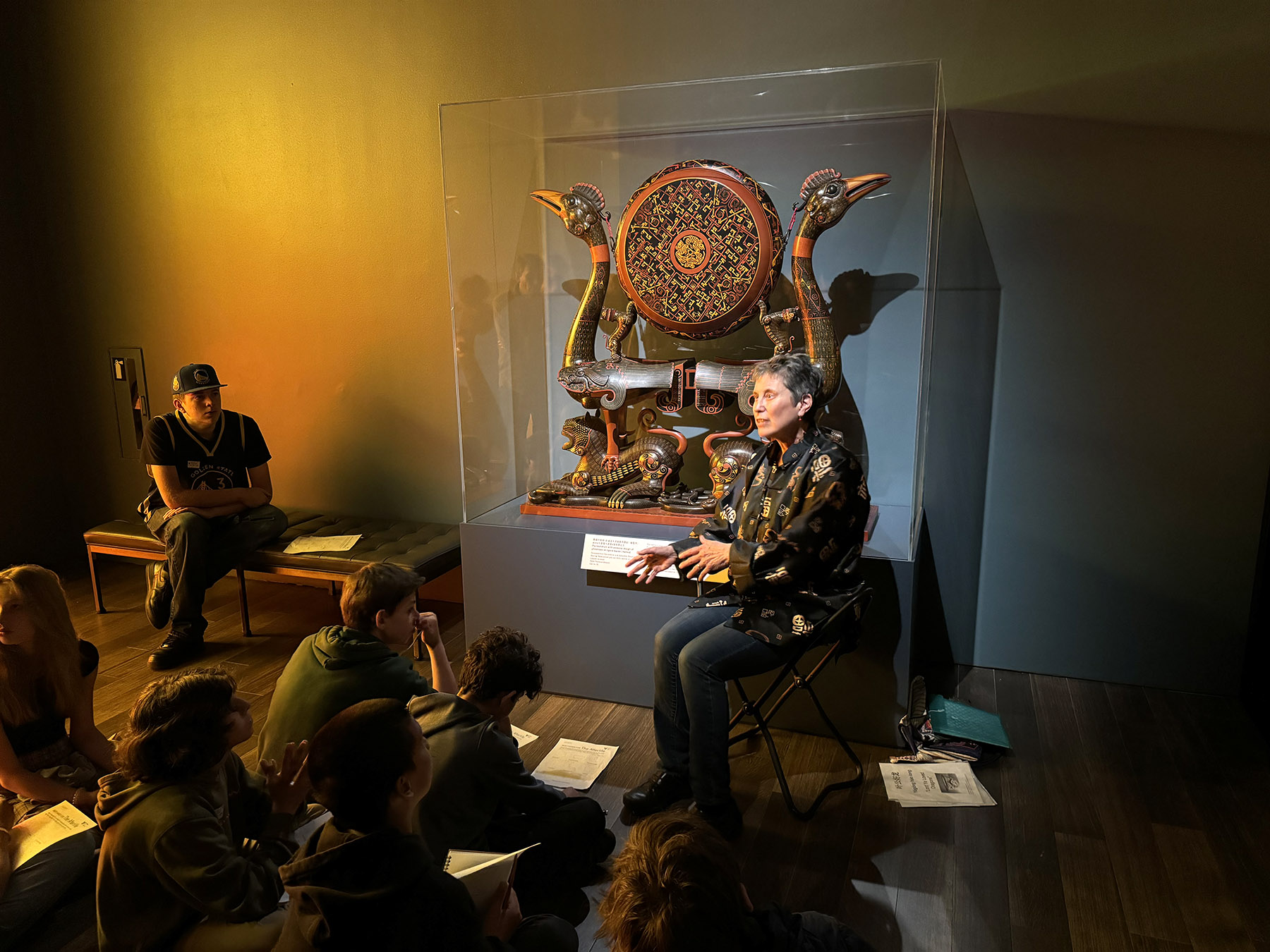
The show consists of five sections that vividly illustrate the achievements in art, music, technology, and design of the Zeng and Chu states, two vassals of the Zhou Dynasty (c.11th century-256 BC) in the middle reaches of the Yangtze River, a cradle of China's early civilization at the end of the Bronze Age.
Zhang said that, like Tutankhamun's tomb in Egypt, the Zeng state's long and splendid history was revealed by recent archaeological discoveries and their musical instruments, represented by the bronze bells, which astonished the world.
"The objects traveling from Hubei to California allow us to entertain and inform our audience through a magical art journey crossing time and space. I'm sure that our audience will feel the beauty of China's early art and better understand how these regional cultures finally integrated into Chinese civilization via these latest archaeological findings," said Zhang.
"We are witnessing a golden age of Chinese archaeology. Phoenix Kingdoms bridges the gap between myth and history, allowing visitors to come face-to-face with the past through these stunning artifacts," said Jay Xu, director and CEO of the Asian Art Museum and a specialist in early China, at the opening ceremony.
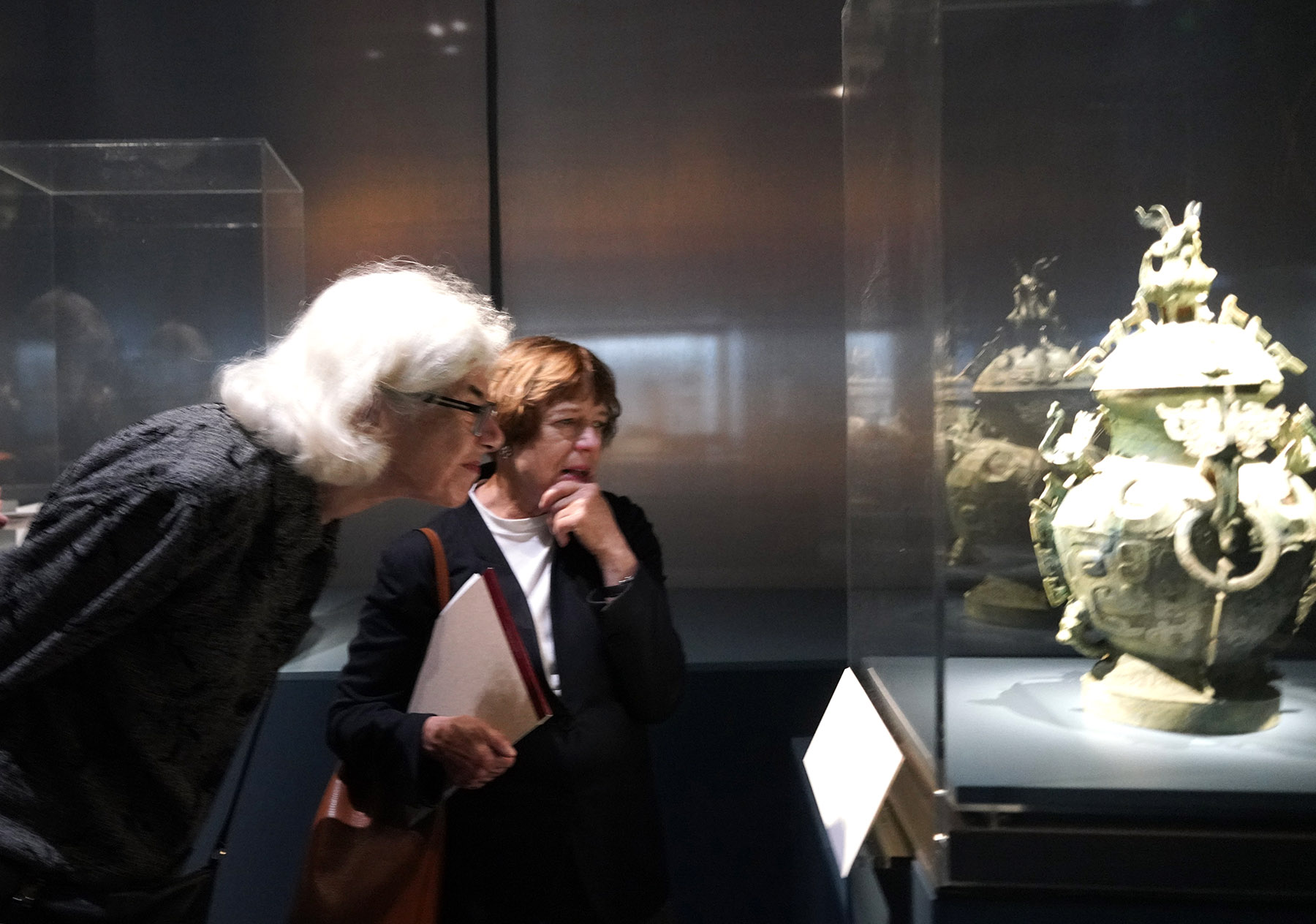
Zhang emphasized the previously unknown significance of these states.
"These exquisite artworks, national treasures in China due to their rarity and beauty, serve as missing links between myth and recorded history," he explained.
It is such a rare opportunity for American audiences, since the artifacts, like textiles that were previously too fragile to be excavated or travel, can now be shared with the public thanks to improved environmental controls and scientific advances, said Anne Kaahn, a docent of the Asian Art Museum.
"People should really get in and see this. You'll learn how incredibly sophisticated Chinese history is," she told China Daily, adding that even those who have no prior knowledge of Chinese history can appreciate it.
"The bronze work that they did — it's hard to replicate that today. It's so intricate, and just the idea that people were buried with these things!" she said.
One of the pieces that Kaahn recommends to visitors is the 16 writhing dragons that resemble snakes, which make up the base of a drum from the tomb of the Marquis Yi of Zeng (433 BC).
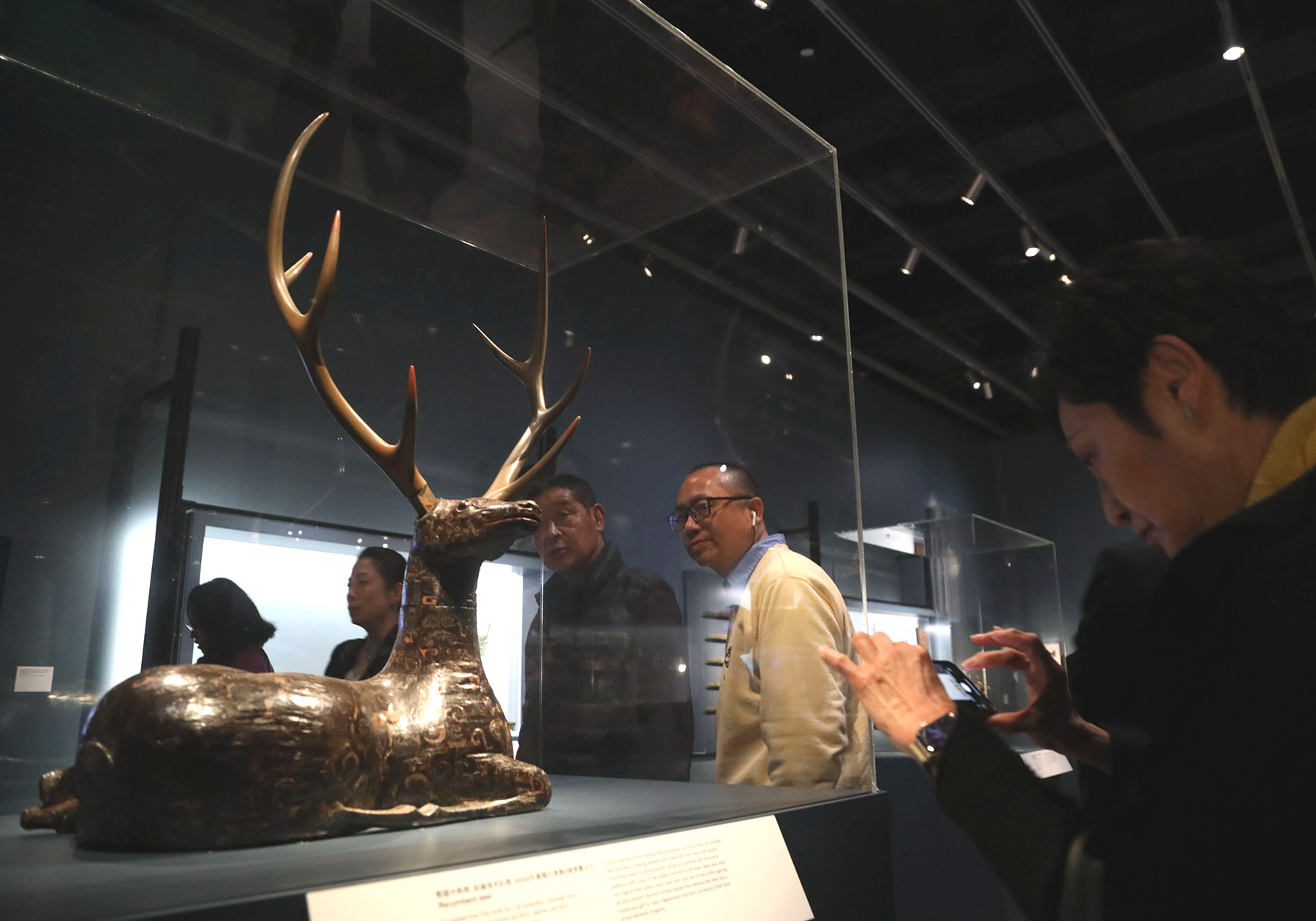
Other highlights include the ornament with a design of two raptors on a mask (2200 BC), the oldest piece on view and the bronze double-walled square jian-fou cooler, a technological marvel.
The jian-fou was also found in the marquis' tomb. The cleverly engineered vessel-within-a-vessel could keep refreshments, like millet ale, cool for lavish festivities during warm months — and was perhaps the first metal cooler in recorded history.
The exhibition has garnered significant interest, attracting visitors from all walks of life. Huiqi Demke, an 11-year-old visitor from Utah, is eager to learn more about Chinese history.
"I've been studying Chinese for five years, and I'm always fascinated by Chinese culture," she told China Daily. "This is an amazing opportunity to learn and share what I see here with my classmates."
Zhou Maoyi, deputy Chinese consul general in San Francisco, emphasized the exhibition's role in fostering cultural exchange.
"This is a rare chance for Americans to delve into the brilliance of Chinese culture from over 2,000 years ago," he said. "We hope it opens a new window for people, especially young visitors, to appreciate the richness of Chinese history and traditions."
Li from the National Cultural Heritage Administration also said: "I sincerely hope that cultural heritage institutions and museums from China and the US will work closely together, promoting equality, mutual learning, dialogue, and inclusiveness to jointly compose a new chapter of China-US people-to-people exchange."
The Asian Art Museum had the idea of holding the show 10 years ago. It took them five years to prepare, with the help and support of their Chinese counterparts.
ALSO READ: A focus on the formative
Since 2013, it has cooperated with key museums in China to bring the famous Terracotta Warriors and cultural relics of the Han Dynasty (206 BC-AD 220) to the US. The Phoenix Kingdoms is seen as a prequel to the previous exhibitions.
There are more shows planned by working with Chinese museums, including bringing more Chinese artwork to the US and holding traveling Asian Art Museum exhibitions in China, Xu added.
"The language of art can transcend cultures," said Xu.
The exhibition will run through July 22.
Contact the writers at dengzhangyu@chinadaily.com.cn


